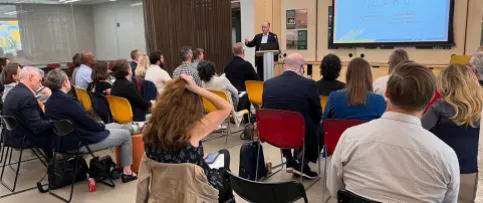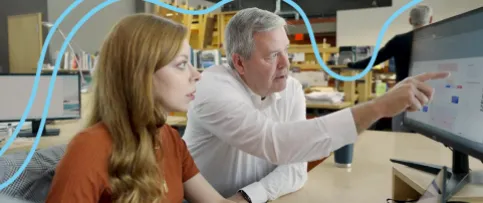The opinions expressed in this commentary are solely those of the author and do not necessarily reflect those of the National Council of Architectural Registration Boards (NCARB).
In 2009, I delivered a speech on social issues to a sustainability group—and I received blank stares. Today, students, interns, and young architects are much more vocal about their interest in working for the public good. However, one complaint I’ve heard, and voiced myself, is that there simply aren’t enough opportunities for young people in public interest design. Yet after working in eight architecture offices, I can confidently say that every firm and every project has the potential to “do good.”
Three pervasive myths stand in the way of greater acceptance of the value of social sustainability. The good news? Overcoming these misconceptions is easier than you think. Together, we can help shape the conversation, bringing a socially conscious lens to the forefront of design.
Myth #1: Social issues are solved by the government and social workers, not architects.
The most-referenced evidence of this myth is the fall of Pruitt-Igoe, a modernist public housing project in St. Louis. But upon closer inspection, Pruitt-Igoe didn’t fall because the architecture was unable to influence the social welfare of its residents, but because the architects failed to understand the community for which they were designing.
Here’s a more personal example of how architects can help solve social issues. Several months after Hurricane Ike hit Texas, a number of builders were unable to obtain certificates of occupancy. To resolve the issue, I was asked to advise government officials on relief efforts. Where a non-designer may see only one solution—spending more money—an architect could propose several solutions. For example, adjusting the scope or quality of finishes to keep the budget in line; or exploring various code options. This is when design becomes an invaluable tool for those with limited resources.
Myth #2: Pro bono work will never pay.
In 2011, I took a summer internship working on a large Veterans Administration hospital. The firm secured the job due to their attention to the social and psychological needs of the patients. Put another way, social sustainability research, which some might characterize as pro bono work, helped the firm win a large commission with strong potential for repeat work.
There was risk involved to win the client—risk that manifested in a creativity and speculation from how the work was done to how it was billed. But expanding the client pool can have a positive net effect—for architects, clients, and those who live, work, and play in these spaces.
Myth #3: My firm (and IDP) doesn’t do this sort of thing.
Actually, your firm probably does. There are even a few firms that only practice socially responsible architecture, and they are often staffed with fellows, not permanent employees (here’s one example).
Last year I was a fellow at bcWORKSHOP, an award winning community design center in Dallas, TX. While I encourage everyone to apply to fellowships, AIA-supported research [PDF] found that 80 percent of architects feel their work is in the public interest. This suggests that many firms are already doing socially conscious work, maybe without realizing its full potential. Ask around, pose questions, and suggest opportunities to do more. Mainstreaming this work will not only benefit the profession, it will create opportunities for the next generation to pursue careers in public interest design.
In the meantime, emerging professionals may have to forge their own opportunities. That’s where the Intern Development Program (IDP) comes in. The IDP challenges you to get a minimum of 80 (maximum of 320) hours of leadership and service. Because this falls under supplemental experience, you have the flexibility to try new things; to expand how we articulate our role to non-architects; to grow not only your own scope of abilities, but also the profession’s.



